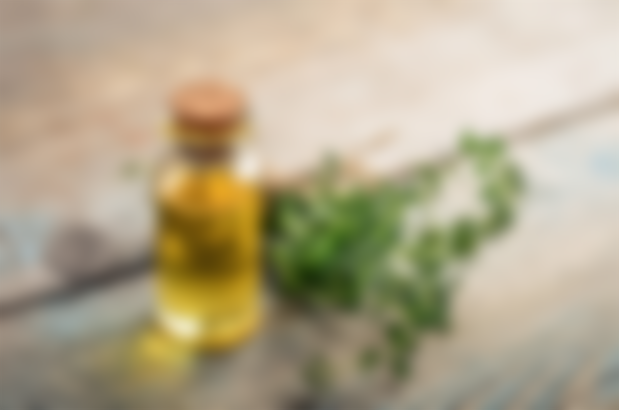The herb easily crosses with other species, so we know hundreds of varieties of thyme. We live in a time when we are burdened at every turn. There are all sorts of diseases that we didn't know about before, at least not to the same extent. The history of herbal medicine goes back a long way. Therefore, it is nothing new that modern science also pays a lot of attention to plants, as they have the advantage that they are not harmful even with prolonged use, and the real healing effect is observed with long-term use.Already Hippocrates wrote about it in his writings, the Egyptians used it in embalming, and his homeland is the Mediterranean.
Research has shown that the main healing properties of garden thyme are related to flavonoids and essential oils, thymol and carvacrol. It soothes coughs and relieves smooth muscle spasms by the mechanism of calcium channel blockade, and also relieves coughing. Thyme tea eliminates water from the body and helps with catarrh of the stomach and intestines. Tea is prepared as an infusion of 1 to 4 grams of the drug 3 times a day.Thyme is also used in cosmetics and natural cosmetics. It is often found in cosmetics such as: deodorant, cream, toothpaste and tonic. It inhibits rot, cures skin diseases and eliminates acne.In folk medicine, it is used against dyspepsia (digestive disorders), chronic gastritis, asthma, children's diarrhea, enuresis (involuntary urination) in children, sore throat, tonsillitis, and against whooping cough and bronchitis.

About thyme Thymus serpyllum or thyme is a common name for many self-grown forms of thyme. Thymus vulgaris L is used for garden thyme. Botanists are still not united and do not equate the terms thyme and thyme. The shrub grows up to 50 cm high and has woody, lying or upright hairy stems. The leaves are small, narrow, hairy and gray-green and curled at the edges. The flowers are small, stalked and pink. Thyme has an aromatic, slightly lemon-like smell and a bitter taste.
Growing in the home garden It is not difficult to grow medicinal plants in a small home garden. Like other plants, medicinal plants adapt to the environment in which they grow, but each of them still has some special requirements. A creeping plant such as thyme or. thyme, can be planted among the stones in the garden and there also form the center of the garden. The same plant stays in the same place for 3 to 4 years, so we must pay attention to soil preparation. The soil should be clayey and sandy, sufficiently supplied with humus and lime. It thrives best in warm and sunny locations that are leeward. Thyme is planted in rows, in spring or autumn, the rows should be 40 cm apart. It is not sensitive to pests, we only need to water it when it is dry and hoe it if there are too many weeds.
Picking thyme The entire flowering plant can be pruned from mid-May to mid-September, preferably in June at a height of 5 cm above the ground to avoid the woody part of the stems. In the first year we cut it only once, but later we can cut it twice. We only collect flowers without roots.
Drying Dry thyme in a dry place or in an herb dryer. The temperature should not exceed 40 degrees, because otherwise we will reduce the amount of essential oil. If we dry it in the room, we must be careful not to touch it with our hands and therefore use wooden sticks. Dried thyme contains from 0.7 to 3% of an essential oil composed of thymol, carvacrol, borneol, linalool and also contains tannins, glycosides, resins and organic acids.
Medicinal properties of thyme Thyme tea dissolves mucus in the stomach and lungs and has immediate disinfectant power. It is recommended for all respiratory infections, asthma, whooping cough, pneumonia, diseases of the stomach and intestines, intestinal cramps, kidney cramps. Thyme is an incredibly powerful and easy herb that is also used in detoxification. What’s more, the plant is a great booster of the immune system as it stimulates the production of white blood cells while increasing resistance to foreign bodies attacking the body. Cold winter is coming and thyme tea will help us strengthen our resilience.
Thyme in cooking Thyme is used for culinary purposes as a spice for venison, liver, liver pate, fillings for poultry, poultry, legume dishes, tomatoes, green peppers. We can use fresh chopped leaves or dry ones.
Use of thyme or thyme: - -for skin: dilute 1 drop with coconut butter for problem skin -pain relief: mix 3 drops of thyme oil with two teaspoons of sesame oil -fatigue: 2 drops in a water bath -mouthwash: 1 drop per cup of water -Inhalation: For inhalation, mix 0.25 g of thyme oil with half a liter of boiling water. We inhale the vapors deeply as they bring relief to respiratory ailments.
Relief of other conditions: -nail fungus -parasites -muscle pain -chronic fatigue -hair loss -Depression -fatigue -headache -insomnia -snoring -skin problems -kidney problems -anxiety -stress
Thyme tea A teaspoon of thyme tea is steamed with a cup of dill and left to stand for about 4 minutes. If we use a fresh plant, we give only half a teaspoon. It is recommended to drink up to 3 cups a day. Recent studies in rats have shown that thyme extract significantly reduces heart rate in rats with high blood pressure and helps lower blood cholesterol levels.

Tea mixture against cough and fever:
A teaspoon of dried garden thyme, a teaspoon of dried mallow root and a teaspoon of anise are crushed in a mortar and poured with a cup of boiling water. Wait 10 minutes, then strain the water. We drink tea in small sips and stay in bed after it. If desired, you can add ginger, which will also open your stuffy nose. We drink up to 3 cups of tea a day.
Thyme oil Use during pregnancy is not recommended, even if you have high blood pressure. Always test the oil on your feet before use. Excessive use causes sensitization, which means that the body recognizes a substance as foreign and develops defensive lymphocytes against it, so it irritates the skin the next time it is encountered. We do not apply it to the eyes, nose and ears. Not all oils are the same, as they are of different concentrations, so follow the instructions for use that come with the oil. Usually 1 to 3 drops are added to the application. It is used to relieve various symptoms.

It is most used in respiratory infections, as it melts mucus and soothes coughs. Disinfects. It puts you to sleep and calms you down (helps with anxiety and insomnia). It speeds up digestion and eliminates winds. Relieves stomach and intestinal problems. It helps with kidney and bladder diseases. It helps with menstrual problems. It helps in treating pneumonia. Strengthens resilience. Helps with fungus and skin problems (cleanses acne prone skin).
Make yourself an essential oil: Thyme essential oil is obtained by steam distillation of fresh or partially dried thyme leaves and flowers. Distillation produces a red colored oil that has a strong, slightly spicy odor. Additional distillation produces a pale yellow oil, and its chemical composition depends on the type of thyme.
You need: -½ cups of fresh thyme - 0.03l of olive oil spice grinder -glass container -a pan with a long handle
Preparation: Wash the herbs and dry them, preferably in the sun. Grind them as much as possible in a mortar, place them in a pan and pour olive oil over them. Cook in medium-high oil for at least 5 minutes until bubbles form on the surface. Then allow the mixture to cool and pour into a glass container and store in a cool place.
Photos are taken from google.com.
Thank you for reading my article.

STAY HEALTHY!
@Purebeauty




@turuncu Thank you for your tip